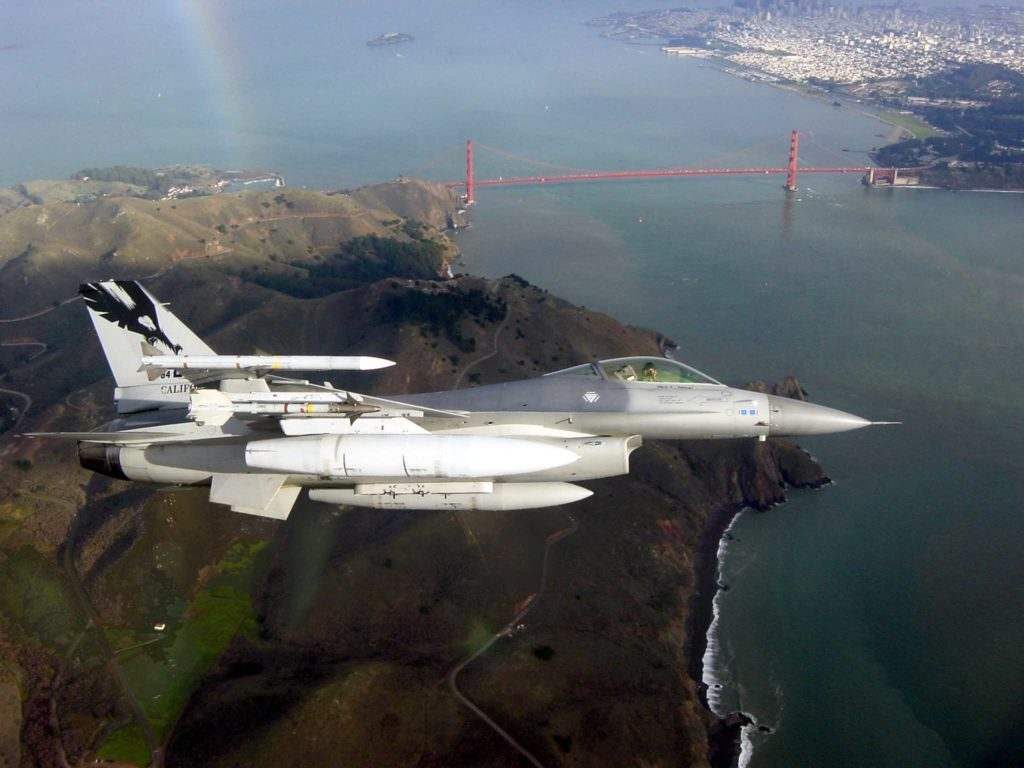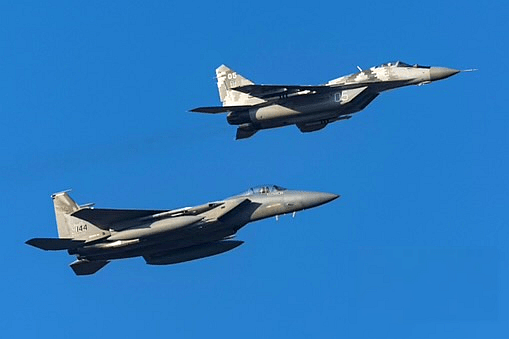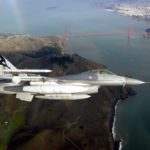There has been much debate about the value of sending F-16s to Ukraine in support of their homeland defense efforts against Russia. This short video featured in the Wall Street Journal explains the rationale behind NATO’s decision and makes the case that the transition will take far less time than the 18 months that has been forecast.

F-16 Fighter Jet
My former F-16 flying unit, the 144th Fighter Wing, has been training with the Ukrainian Air Force for 30 years including during an exercise known as Operation Clear Skies where we deployed to Ukraine and trained side by side with their pilots in 2018. Over these many years of training and exchanges with the Ukrainian Air Force, we have learned that their pilots are smart, well trained, highly capable and extremely innovative. This has proven out over the past year as the tiny Ukrainian Air Force has prevented massive Russia from achieving air superiority over the skies of Ukraine. The best comparison I can make would be the US Air Force failing to achieve air superiority over the skies of Venezuela. This speaks volumes to the intelligence, tenacity and commitment of the Ukrainian Air Force and their pilots.
What are the challenges the Ukraine Air Force will have to contend with if they do add F-16s to their fighting fleet?
I believe a major hurdle is FOD (Foreign Object Debris). The F-16 Viper is a single engine aircraft with an intake that is very close to the ground. The engine in the F-16 can generate between 23,000 to 29,000 pounds of thrust depending on the use of Afterburner. This makes the intake to the F-16 even at idle power like a large vacuum cleaner. Unfortunately, there is more than one horror story of a crew chief or ground crew troop getting too close to the intake and getting sucked in to the engine with tragic results. In fact, in every F-16 parking spot there is a half circle painted on the ground in front of the intake to warn all ground personnel to stay at a safe distance.

The 144th Fighter Wing training with the Ukrainian Air Force
Until now, the Russian military has allowed some Ukrainian airfields to continue to operate, presumably because it wants them for itself later. But the F-16 is designed to be run from very clean airfields, and US and NATO airfields are constantly swept to make sure that no debris is on the ramp that could get ingested in a Viper engine and put it out of commission. It is standard practice in F-16 squadrons to conduct a FOD walk every morning of the ramp and runway before flight operations to remove any loose articles or debris that could be ingested in a Viper engine.
In contrast, Russian fighter jets like the Mig-29 and the SU-27 have two engines and the intakes are much higher off the ground so that their engines are less likely to suck up FOD off the ramp. These intakes are also designed with special vents and inlet placement to make them more resistant to Foreign Object Debris, as they plan to work from makeshift or less-than-ideal runways.
Even if Russia were to fail to put huge holes all over the runways of the Ukraine’s airfields, simply making a mess of things with airstrikes in general, or perhaps even simply dropping lots of small objects via drone on a regular basis, could make it very challenging for the Ukrainian Air Force to maintain a clean airfield.
As we approach US Independence Day on July 4th, I also can’t help but compare our own war of Independence from Great Britain to the war that the Ukrainians are currently fighting to maintain the independence of their own country.
The Ukraine war is a conflict that began in 2014 when Russia invaded and annexed Crimea, a peninsula in southern Ukraine, and supported separatist rebels in eastern Ukraine. The war has killed over 14,000 people and displaced millions more. Despite several cease-fire agreements and diplomatic efforts, the war is ongoing, and the Russians, like the Brits in 1776, appear to have no intention of leaving.
One similarity between the two wars is that they both involved a struggle for national sovereignty and self-determination. The Ukrainian government and people want to preserve their territorial integrity and political autonomy from Russian interference and aggression. They also want to pursue closer ties with the European Union and NATO which Russia clearly opposes as they appear to be interested in resurrecting the USSR. Similarly, the American colonists wanted to break free from British control and taxation without representation. They also wanted to establish their own democratic system of government and trade with other countries.
Another similarity between the two wars is that they both involved foreign intervention and support. The Ukrainian government and army have received military and economic aid from the United States, the European Union, Canada, and other countries. They have also received diplomatic and political backing from the United Nations, NATO, and other international organizations. Likewise, the American revolutionaries received military and financial assistance from France, Spain, the Netherlands, and other countries. They also received diplomatic recognition from France and other European powers. While I recognize that Britain did not have atomic weapons in the 1700’s, all of these European Nations supported the USA at the risk of losing Britain as a major trading partner.
A third similarity between the two wars is that they both faced internal divisions and challenges. The Ukrainian society and politics are divided along linguistic, ethnic, regional, and ideological lines. Some Ukrainians support closer ties with Russia or even joining it, while others oppose it. Some Ukrainians favor a centralized or federal system of government, while others prefer a decentralized or confederal one. Similarly, the American society and politics were sharply divided along geographic, economic, social, and religious lines. Some Americans remained loyal to Britain or were neutral, while others rebelled against it. Some Americans favored a strong central government, while others preferred a weak one. Back then, the idea of an independent United States of America was a complete experiment, and I would argue that many Russian Loyalists in the Ukraine feel the same way today.
While it is clear that there are also many differences between the two conflicts, in the year 2023 I don’t know how the greatest nations in the world (NATO) can allow a despot like Vladimir Putin to invade a neighboring country and kill tens of thousands of people while displacing millions more without suffering severe consequences from the international community. I personally believe that F-16s will make a big difference in Ukraine maintaining their independence and pushing Russia out of their country.
Enjoy the video and feel free to send your comments and insights after watching it. WSJ Video on F-16s for the Ukrainian Air Force

AB, excellent commentary. Howdy
Thanks Howdy,
It’s people like you that have helped make the Ukrainian Air Force what it is today!
AB